Discover just how fast MotoGP bikes really go, what makes them the fastest motorcycles on the planet, and why Mugello is the undisputed home of top speed records.

Subscribe to our Telegram channel for instant updates!
In a world of instant gratification and constant digital noise, MotoGP doesn’t just cut through. It blasts past at over 360km/h. The sport isn’t just fast. It’s a masterclass in how human skill and mechanical innovation converge to create pure, undiluted spectacle. And nowhere is that more apparent than on the straight at Mugello, where motorcycles fly faster than most passenger planes during takeoff.
Beyond the Numbers: What Speed Really Means in MotoGP
It’s tempting to talk about MotoGP purely in terms of numbers. After all, the current top speed record stands at 366.1km/h, held jointly by Brad Binder (2023) and Pol Espargaro (2024), both set during sprints at Mugello. On paper, that’s more than three times the speed limit on most highways—and just shy of a Formula 1 car’s record top end.
But speed in MotoGP is more than a statistic. It’s how riders balance on the edge of physics, brake from 350+ km/h to zero in mere seconds, or lean over at impossible angles to kiss the tarmac through corners like San Donato. It’s the tension in a pass, the roar of acceleration, the heart-stopping late braking into Turn 1. And unlike four-wheeled machines, MotoGP bikes have no roll cages, no seat belts—just riders, machines, and raw instinct.

Why Mugello Reigns as the Cathedral of Speed
Of the many Grand Prix circuits, Mugello in Italy dominates the speed charts. With its 1.14km front straight and a downhill launch from the final corner, it offers riders a perfect storm of top-end opportunity. It’s no surprise that nearly every top speed record in the sport has been logged here.
But Mugello isn’t alone. Circuits like Qatar’s Lusail, Phillip Island in Australia, and Austin’s Circuit of the Americas consistently push MotoGP prototypes to their limits. Even tracks with lower speed ceilings—like Jerez or Sachsenring—deliver jaw-dropping racing, proving that thrills in MotoGP aren’t measured solely in kilometres per hour.
A Human Element That No Algorithm Can Replicate
While the bikes themselves are engineering marvels, it’s the riders who make MotoGP unforgettable. They navigate 23 laps at an average speed of over 177km/h, weaving through traffic at elbow-to-elbow distances. At Phillip Island, Marc Marquez averaged 181km/h over a full race distance in 2024—despite swirling winds, elevation shifts, and tire degradation.
There’s no AI, no self-correcting systems to save a rider from a mistake. Every corner exit, every brake tap, every mid-air correction is pure human judgment and lightning-fast reflexes. That’s what makes MotoGP real. That’s what makes it thrilling.

Safety at the Speed of Light
Traveling at these speeds isn’t without danger. MotoGP’s governing bodies enforce stringent safety standards—both in gear and in circuit design. Airbag-equipped race suits, carbon fibre helmets, and biometric sensors are now standard. Trackside safety barriers, medical teams, and constant race direction oversight ensure that when the unexpected happens, help is immediate.
Still, the greatest safety feature in MotoGP is the skill of the riders themselves—men and women who’ve spent years conditioning their minds and bodies to operate at the limit.
Faster Than the Rest
When compared to other motorsport series, MotoGP stands tall:
| Motorsport | Top Speed |
|---|---|
| IndyCar | 380km/h (236mph) |
| Formula 1 | 378km/h (234.9mph) |
| MotoGP | 366.1km/h (227.5mph) |
| WorldSBK | 339.5km/h (211mph) |
| NASCAR | 321km/h (199mph) |
| WRC | ~200km/h (124mph) |
That MotoGP comes this close to F1 and IndyCar—with just two wheels and a body exposed to the elements—is not just impressive. It’s outrageous.
MotoGP is speed with soul. It’s the relentless push of engineers chasing fractions of a second. It’s the courage of riders threading the needle at speeds most people will never experience. It is a sport stripped down to its purest form: man, machine, and motion.
So next time someone asks, “How fast do MotoGP bikes go?”. Tell them they don’t just go fast.
They redefine what fast even means.




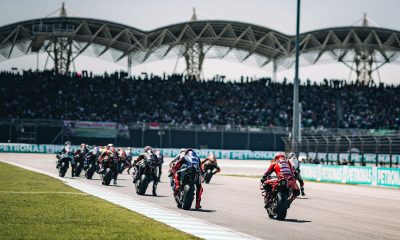


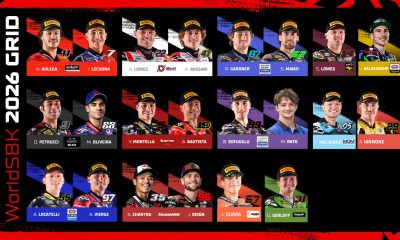
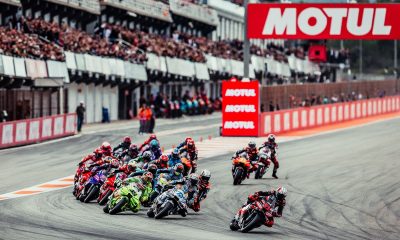



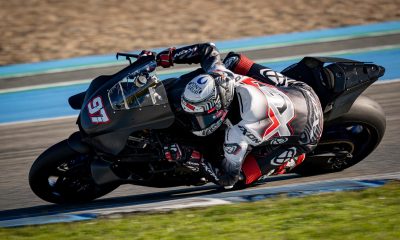
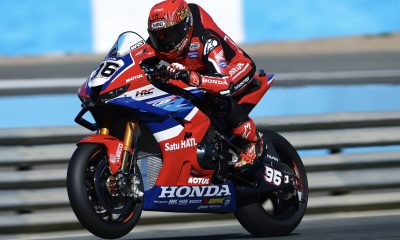
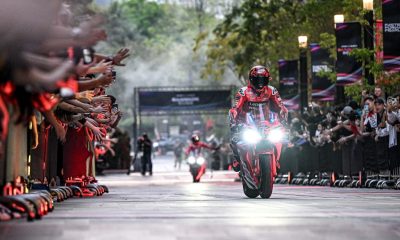
















Facebook
Instagram
X (Twitter)
YouTube
LinkedIn
RSS